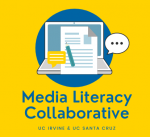The World in 300 CE
- Introductory Lesson: “How interconnected were the distant regions of the world in 300 CE?”
- Silk Road, Lesson: “What was the Silk Road?”
Rome and Christendom, 300 to 1200 CE
- Crusades, Lesson: “Why did Europeans decide to go Crusade to Jerusalem in the 11th Century?”
- Crusades, Lesson: “What were the effects of the Crusades?”
- Spread of Christianity, Lesson: “How did Christianity spread through the Roman Empire and to other cultures?”
World of Islam and Southwestern Asia, 300 to 1200 CE
- Spread of Islam, Primary Source Set: “How did Islam spread to multiple cultures? How did Islam spread to multiple cultures?”
- Baghdad as a Site of Encounter, Lesson: “What were the multiple ways people of different cultures interacted at Baghdad? What did the interactions produce?”
South Asia, 300 to 1200 CE
- Gupta India lesson: “Under the Gupta Empire, how did monks, nuns, merchants, and scholars spread religious ideas and technological innovations throughout AfroEurasia?”
East Asia, 300 to 1300 CE
- Buddhism and the Silk Road, Lesson: “How can we study Buddhist art to learn about the movement of goods, peoples, and ideas across the Silk Roads?”
- Samurai and Medieval Japan, Lesson: “What influence did samurai customs and values have on the government and society of medieval Japan?”
West Africa, 900 to 1400 CE
- Medieval Africa, Primary Source Set: “What were the effects of Arabic trade on West Africa?”
- Medieval Mali, Lesson: “How was Mali a Site of Encounter?”
Americas, 300 to 1490 CE
- Aztecs, Lesson: “How did use and control over water affect the expansion of agriculture, trade, and empire under the Aztecs?”
- Mesoamerica, Lesson: “How does the gold artistry of the Mesoamericans reveal their cultural and religious beliefs?”
- Art in Colombia, Lesson: “How does the gold artistry of the pre-contact native Colombians reveal their cultural and religious beliefs?”
Sites of Encounter in Medieval World, 1200 – 1490 CE
- Plague/Black Death, Lesson: “What can primary and secondary sources tell us about the Black Death?”
Global Convergence, 1450 – 1750 CE
- Venice and the Ottoman Empire, Lesson: “What was the role of trade and diplomacy in the relationship between Venice and the Ottoman empire?”
Impact of Ideas, 1450 – 1750 CE
- Renaissance, Lesson: “How was Florence a Site of Encounter?”
- Renaissance, Lesson: “How did Renaissance artists change our understanding of perspective?”
- Renaissance, Lesson “What were the effects of the Renaissance and Humanism?”
- Reformation, Lesson: “What abuses in the Catholic Church caused Luther to demand reform?”
- Reformation, Lesson: “What ideas of reform (and Church abuses) were spread through Europe?”
- Reformation, Lesson: “How did the Reformation divide people and states?”
- Scientific Revolution, Lesson: “Which technology had the most significant impact on the Scientific Revolution?”


